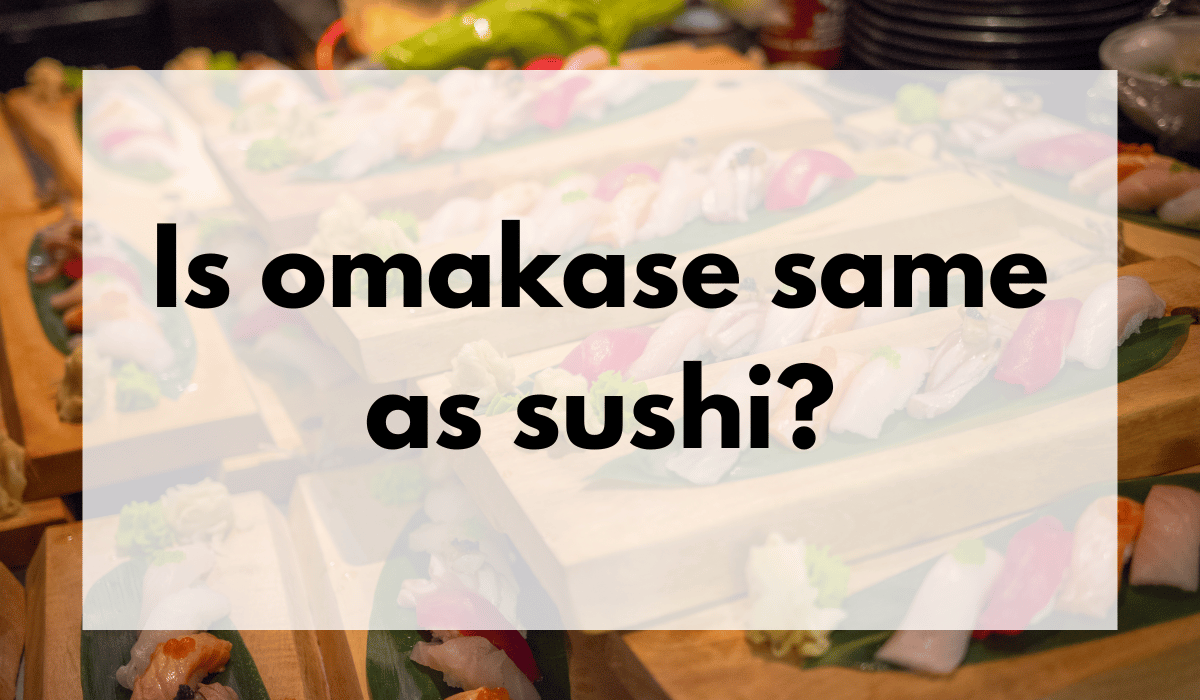Sushi and Omakase are dishes which have difference but you will understand about them in this blog post for your knowledge.
What is sushi?
Undoubtedly, there is no denying the potency of a traditional sushi platter. Some people may reject these tiny rolls as “raw fish,” but a thorough examination of the layers on the dish reveals a wealth of flavours and textures. According to first-timers, it’s an excellent way to sample a variety of flavours, including the sweetness of the sticky rice, the boldness of the featured fish (eel, squid, octopus, or salmon), the spiciness of the wasabi, and the lasting zing of the pickled ginger. As soon as you take your first bite of this slightly unorthodox cuisine, you’ll be hooked.
Sushi chefs have experimented with countless variations and combinations over the years in an effort to broaden the dish’s appeal and give each roll their own distinctive flavour profile. The traditional sushi roll we eat now is a far cry from the one that was created centuries ago.
Sushi was first created in the rice fields of China in the second century BC. At the time, fermented rice rolls stuffed with salted fish were all the rage. What was just a method of making it through tough times has become a trend in the culinary world.
To keep the fresh, raw catch fresh for a longer period of time, the rice was fermented and the fish was highly seasoned with salt. Over time, though, people began to abandon the rice and eat the fish alone.
Despite the fact that this custom originated in China, Japan should be given all the credit for making this meal famous and spreading it over the world. Instead of discarding the rice, it is creatively coiled up with the fish and other toppings.
This seemingly individualised cuisine did not enter the mainstream United States until the 1960s. In due time, the iconic California roll was created. Cooking the fish and including avocado in the roll made it more appealing to American palates. Lots of other seasonings were swapped out for new combinations.
Sashimi and maki (layered rice, veggies, and fish packed in a sheet of seaweed), temaki (a rolled version of maki), and hosomaki (a rolled version of maki) are now all popular forms of sushi enjoyed by gourmets around the world.
What is Omakase?
While sushi itself may be a favourite food, it’s the omakase dining experience that will stay with you forever. Until recently, sushi was never offered a la carte. Furthermore, it was not a menu item. Omakase is for sushi aficionados who aren’t afraid to go out and try new things, including trying some of Japan’s other iconic dishes in addition to the sushi. The phrase “I trust you” (omakase shimasu) is shortened to “omakase.”
Having nothing but faith in the chef’s ability to satisfy his palate, the consumer places his financial stake in him. When dining omakase-style, the diner is not given a menu to peruse. Each course arrives as a complete surprise. The chef is flexible, adapting to the needs of his diners as he serves them delicacies one at a time.
Omakase menus gained popularity in the 1990s, when sushi first started making its way to the West from Japan. Some people hated the raw fish, but like the crunchy tempura, flavorful soups, and sauces of the food. Chef-recommended drinks, soups, and appetisers round out the sushi experience on the omakase menu. We only serve fish that is in season, and our menu is mostly determined by what we catch that day. This is really exciting, and diners can rest assured that their money will be well spent on the locally sourced fish and seasonal produce used.
This method of service was helpful for first-timers because it removed the pressure of having to make an informed seafood selection. By leaving the decision of what to eat to the chef, diners are free to focus on enjoying themselves rather than fretting over whether or not the food will fit their tastes.
The Japanese have taken the omakase concept beyond sushi and implemented it into bar menus, where the bartender mixes drinks at their discretion to boost client spirits.
During an omakase meal, the chef will seat a group of diners at the sushi bar and begin presenting them with meals while chatting with them and offering commentary throughout the meal.
At the end of the meal, the guest receives a bill, which can be quite expensive unless the guest and chef agree on a price in advance. Mini omakase, which is essentially a tasting menu for beginners, has also been introduced by some restaurants.
Which is the best restaurant in UAE?
The Japanese restaurant chain Kimura-ya Authentic Japanese Restaurant, which has more than two hundred outlets in Japan, has successfully established itself as the go-to Omakase restaurant in Dubai among locals and tourists. This eatery serves some of the best sushi in Dubai. The restaurant has earned a stellar reputation, thanks partly to its authentically Japanese menu and atmosphere. Japanese sushi is a dish typically made of vinegar-flavored rice formed into balls or rolls and topped with raw fish and other toppings. Rolls, nigiri, and maki are just a few of the many types of sushi available at this restaurant. Kimura-ya serves up some of the finest sushi in Dubai.
Conclusion:- After reading this blog you will understand Omakase and sushi dish and Best japanese restaurant In Dubaiwhich is Kimura-ya for your Japanese cuisine craving.
